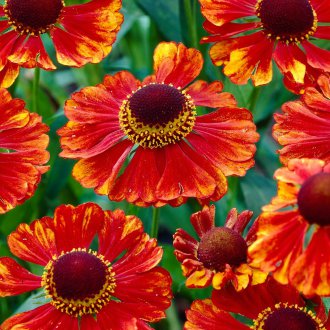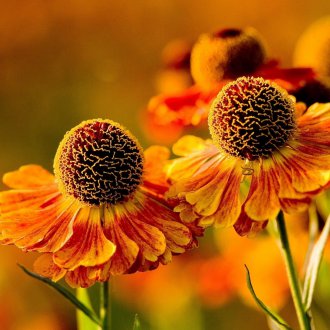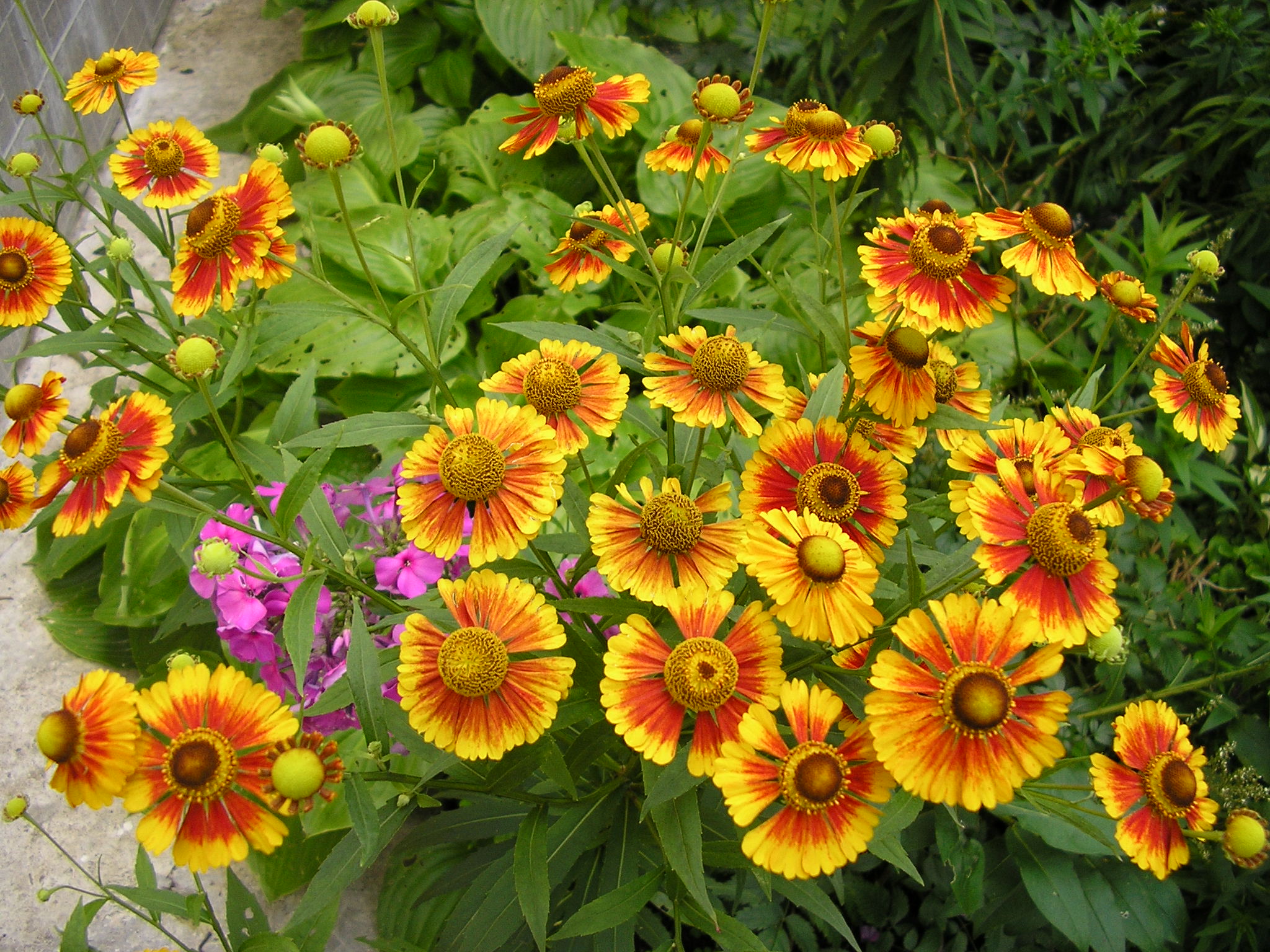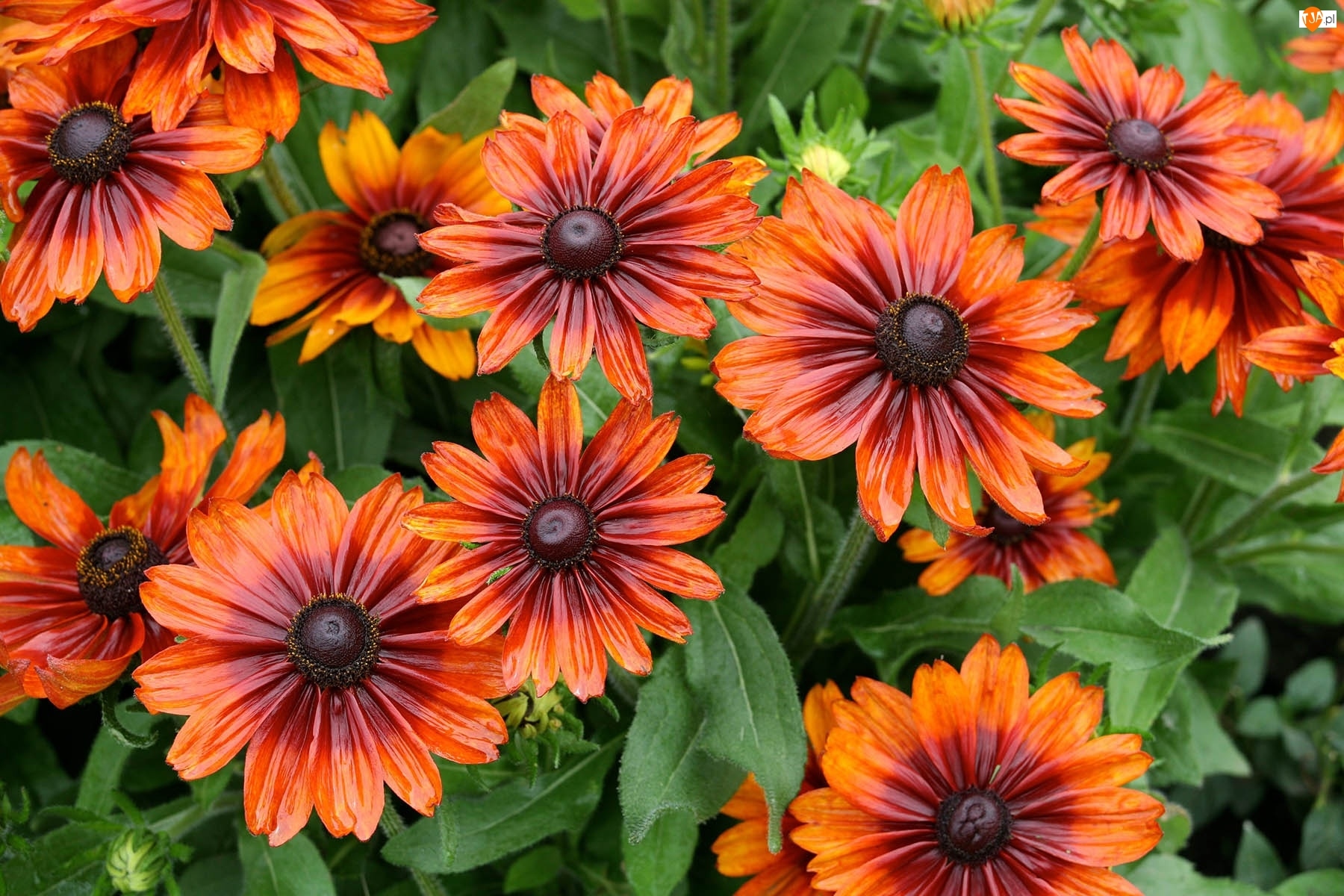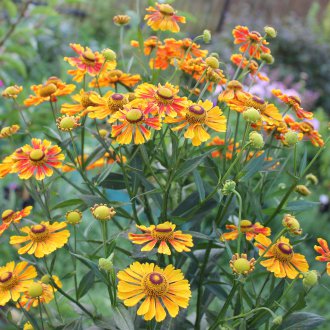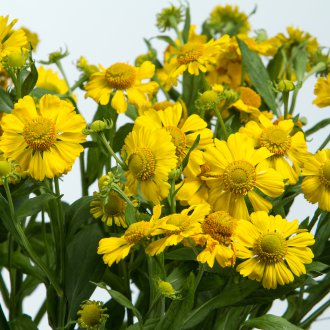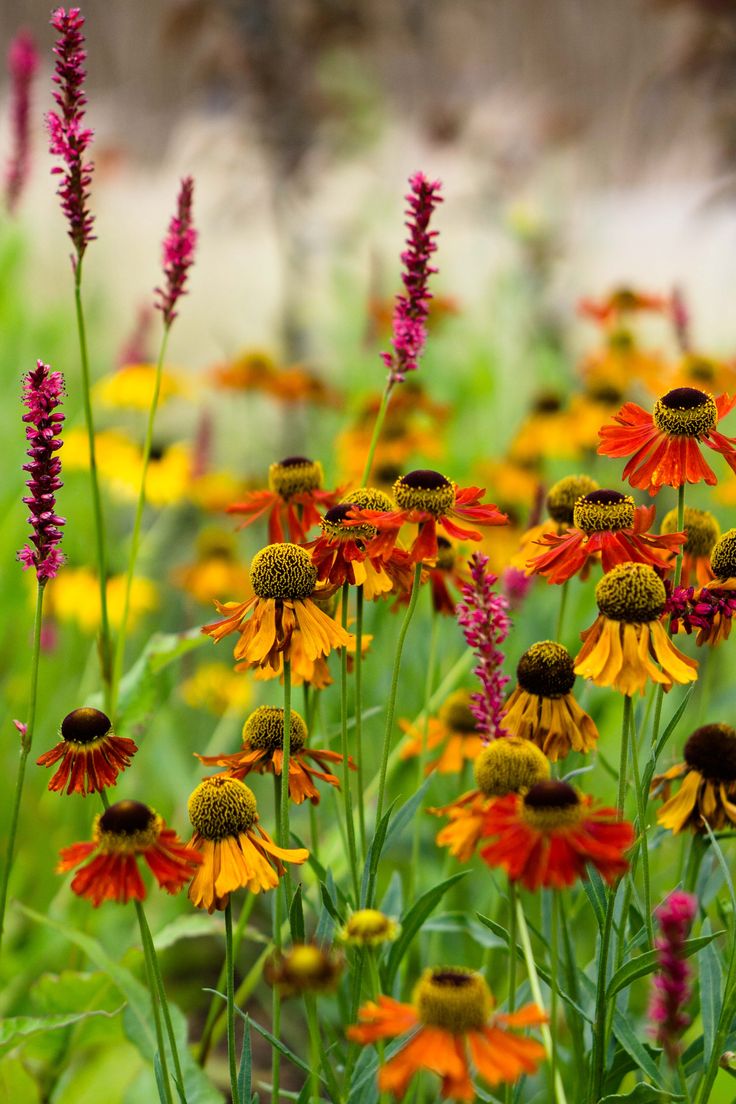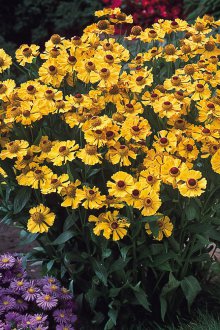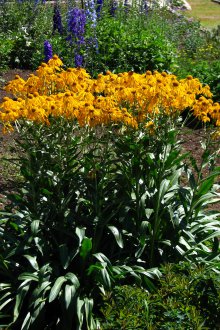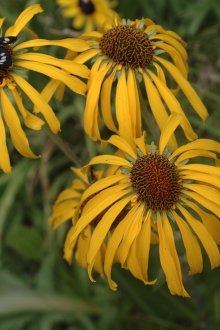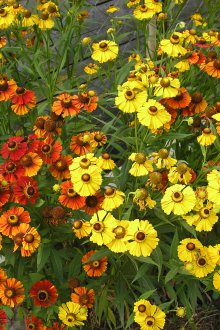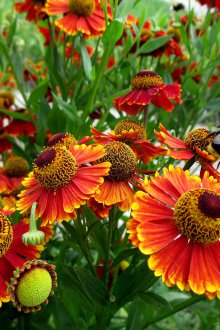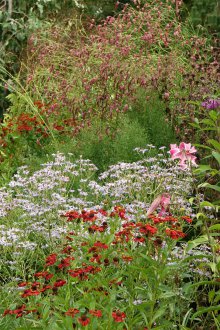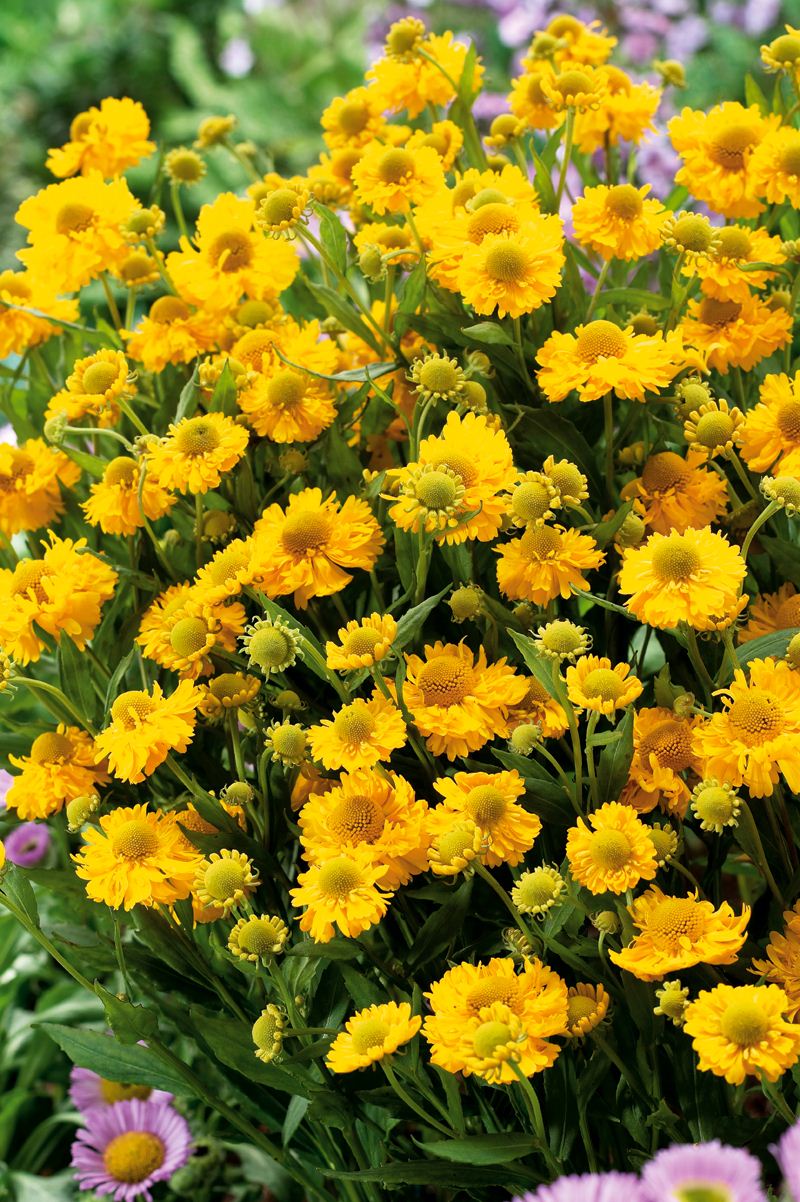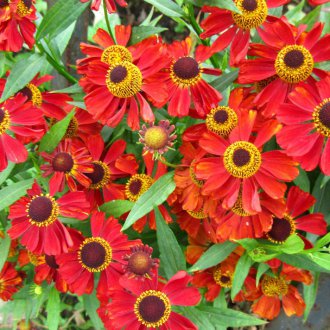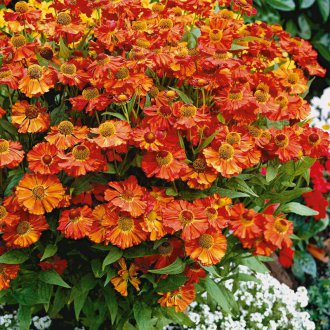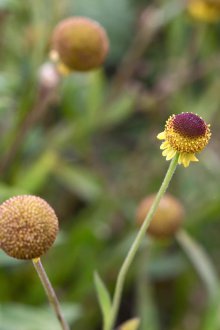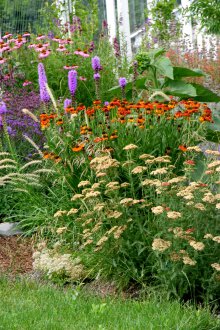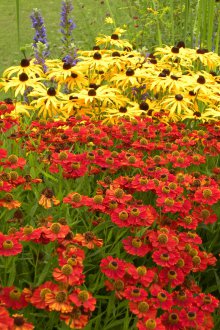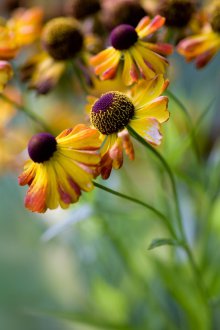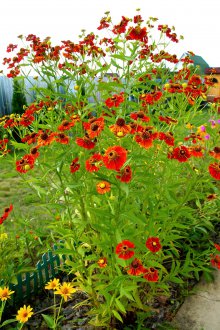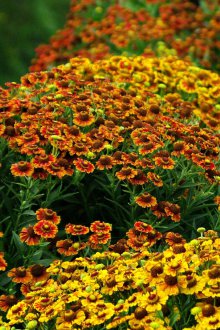Gelenium - an exquisite and bright decoration of the autumn garden (23 photos)
Content
It is thanks to the bright golden or orange inflorescences of gelenium that the design of the garden becomes autumn joyful and luxurious. 39 plant species are known, and some varieties have decorative significance, for example, autumn gelenium. All types of garden forms and hybrid varieties are called the same –– hybrid gelenium. Plant varieties differ in stem height and color of flower baskets. Inflorescences have a daisy-like appearance with a convex core. The color palette of the baskets is the most diverse: from bright lemon yellow and brown shades to purple-red tones.
The stems can grow to a height of 10 to 160 cm and end with one or more flower baskets. Leaves have oval or spear-shaped shapes.
Reproduction of perennial gelenium
Any species of this plant allows breeding in several ways (by seed, separation of the bush or cuttings).
Seed breeding
The seeds of this plant do not differ in good germination, but it is definitely worth trying to grow flowers in this way.
You can sow seeds directly into the soil in the autumn or spring season. However, if you want to grow seedlings first, then sow the seeds in a box in February-March. It is preferable to stratify the seeds - the container with planted seeds is wrapped in polyethylene and placed in a cool place for 30-45 days.
Then the container is taken out and installed in a warm place under artificial light. For germination of sprouts, a temperature of 18-22 ° C is needed. After emergence on sprouts of 2-3 leaves, seedlings dive.
Breeding by dividing outlets
This method can be considered the easiest and most affordable, since any perennial bush is created by independent single-stem plants that form a columnar shape. Each year, such a bush grows by about 10 stems, so it can be separated as early as a year after planting one seedling.
For the operation, the plant is carefully dug up and divided into several separate bushes. Moreover, you don’t need to make special efforts, since the root-rosettes disintegrate almost independently. Thus, the renewal of adult plants occurs simultaneously.
Such breeding of perennial geleniums is carried out in spring or autumn. The most convenient time for seating is May. All young bushes should be placed in pre-prepared wells. Seedlings are blooming the very next year.
Dilution using cuttings
This method can be practiced even during the active growth of stems. Cuttings are cut with a length of about 10-13 cm. For quick root formation, it is recommended to cut the cuttings section with special compounds - Kornevin.
The cutlery is placed in a vessel with water or lightly immersed in soil. As soon as the first roots appear, you can plant the plant in open ground at a constant place of growth.
Planting and care of Geleniums
Before planting seedlings, soil preparation is carried out. This perennial is well developed on light and nutritious soils of a neutral reaction. As preparatory measures, it is advisable to dig the earth and fertilize the soil with compost.Planting of sprouts in the ground is carried out in late May - early June, when night frosts are already unlikely. Geleniums prefer sunny areas, although they do not refuse to grow in shaded areas.
When planting geleniums, the following arrangement of seedlings is used: the distance between the holes is not less than 30 cm, and between the rows - from 35 cm. They dig a hole under the flower twice as much as the root ball. The seedling root is first lowered into the water so that the plant is saturated with liquid, and then it is buried in the hole to the same depth as it was in the pot. If a little expanded clay or small broken brick is poured into the bottom of the pit (in no case construction debris), then permanent soil drainage will be ensured. The soil is mulched with peat after planting all the plants. With this method of breeding, geleniums bloom in the second year.
High-quality care of the plant involves constant watering of green spaces. This is due to the natural habitat of perennial geleniums: wet meadows or marshy lowlands. In the dry period of the year, it is necessary to increase the amount of watering, and the best option would be to use the drip method. However, waterlogging or stagnation of water should not be allowed. To prevent these phenomena, the earth around plants after watering is loosened and sprinkled with new mulch.
Preparing plants for winter includes pruning stems and mulching the soil. As mulch, you can use peat, fallen leaves. If there are no such materials, then any non-woven materials will do.
Plant nutrition
To ensure lush flowering and active growth of plants, it is necessary to ensure their constant fertilizer.
- The first time the soil is fertilized in early May, as it is at this time that the perennial begins to grow actively. As a top dressing, it is better to use urea or some kind of liquid composition.
- The second time the plants are nourished in order to increase flowering. As a top dressing, it is recommended to use Agricola-7 or Agricola-Fantasy formulations. Manufacturers indicate on the packaging how to use the formulations correctly.
- When the plant fades, a third top dressing is carried out, which is intended to prepare the plant for the winter period. For this, you can use superphosphate or potassium sulfate.
To maintain the splendor of flowering, a small pruning of bushes is also carried out. For this purpose, the tops of the highest shoots are removed. Abundant flowering and the development of new flowers will ensure the removal of overgrown buds.
Gelenium pests and control
It can be considered that this perennial is resistant to diseases and various pests, but sometimes a chrysanthemum nematode (worms) can infect plants. The reason for this may be the fallen leaves of diseased plants. There is also an opinion that the reason may be the soil. The disease can affect the plant from May to late autumn. The disease manifests itself in the form of formation of brown spots on the foliage and buds, which stops the flowering and development of bushes. For treatment, the aerial part of the perennial is doused with water heated to 50 °, and the soil is sprinkled with lime.
Preventive measures include: watering the zone of the root system, and not aboveground greenery; not planting land where cases of the disease have been observed.
Due to the variety of varieties of gelenium and its decorativeness, it is very popular in the design of garden plots. Tall species can independently decorate lawns or perfectly decorate groomed walls, fences. Small plants are very elegantly framed by garden paths. Any variety wonderfully complements flower beds.
The plant fits organically into any landscape design and combines exquisitely with many plants. Lush flowering will delight summer residents from the end of summer until the first autumn frosts.
